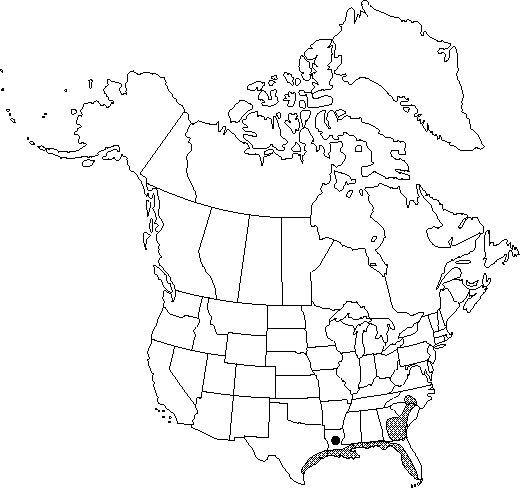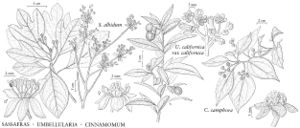Difference between revisions of "Cinnamomum camphora"
in F. Berchtold & J. S. Presl, Prir. Rostlin 2: 47. 1825.
FNA>Volume Importer |
FNA>Volume Importer |
||
| Line 10: | Line 10: | ||
|special_status={{Treatment/ID/Special_status | |special_status={{Treatment/ID/Special_status | ||
|code=F | |code=F | ||
| − | |label= | + | |label=Illustrated |
}}{{Treatment/ID/Special_status | }}{{Treatment/ID/Special_status | ||
|code=I | |code=I | ||
| Line 18: | Line 18: | ||
|name=Laurus camphora | |name=Laurus camphora | ||
|authority=Linnaeus | |authority=Linnaeus | ||
| + | |rank=species | ||
|publication_title=Sp. Pl. | |publication_title=Sp. Pl. | ||
|publication_place=1: 369. 1753 | |publication_place=1: 369. 1753 | ||
| Line 24: | Line 25: | ||
|name=Camphora camphora | |name=Camphora camphora | ||
|authority=(Linnaeus) H. Karsten | |authority=(Linnaeus) H. Karsten | ||
| + | |rank=species | ||
}} | }} | ||
|hierarchy=Lauraceae;Cinnamomum;Cinnamomum camphora | |hierarchy=Lauraceae;Cinnamomum;Cinnamomum camphora | ||
| Line 49: | Line 51: | ||
-->{{#Taxon: | -->{{#Taxon: | ||
name=Cinnamomum camphora | name=Cinnamomum camphora | ||
| − | |||
|authority=(Linnaeus) J. Presl in F. Berchtold & J. S. Presl | |authority=(Linnaeus) J. Presl in F. Berchtold & J. S. Presl | ||
|rank=species | |rank=species | ||
| Line 64: | Line 65: | ||
|publication title=in F. Berchtold & J. S. Presl, Prir. Rostlin | |publication title=in F. Berchtold & J. S. Presl, Prir. Rostlin | ||
|publication year=1825 | |publication year=1825 | ||
| − | |special status= | + | |special status=Illustrated;Introduced |
| − | |source xml=https://jpend@bitbucket.org/aafc-mbb/fna-data-curation.git/src/ | + | |source xml=https://jpend@bitbucket.org/aafc-mbb/fna-data-curation.git/src/f50eec43f223ca0e34566be0b046453a0960e173/coarse_grained_fna_xml/V3/V3_19.xml |
|genus=Cinnamomum | |genus=Cinnamomum | ||
|species=Cinnamomum camphora | |species=Cinnamomum camphora | ||
Revision as of 21:25, 16 December 2019
Trees, to 15 m. Branches terete, glabrous, terminal and axillary buds covered by imbricate bracts, young twigs with clusters of scars from fallen bracts. Leaves alternate; petiole to 3 cm. Leaf blade ovate to elliptic or elliptic-lanceolate, with (1-)3 primary veins, 7-12 × 3-5 cm, base rounded to cuneate, apex sharply acute; surfaces glabrous except for pubescent domatia in axils of main lateral veins. Flowers: tepals greenish white, 1-2 mm, glabrous abaxially, pubescent adaxially; stamens arranged in outer whorl of 6 (actually 2 whorls of 3) and inner whorl of 3. Drupe to 9 mm diam. 2n = 24.
Phenology: Flowering spring (Apr–May).
Habitat: Moist subtropical areas, including the Gulf Coast
Elevation: 0-150 m
Distribution

Ala., Miss., Fla., Ga., La., N.C., S.C., Tex., native, e Asia.
Discussion
Cinnamomum camphora is naturalized locally in the flora. Its crushed leaves have a strong smell of camphor. This species yields commercial camphor.
The name Cinnamomum camphora (Linnaeus) T. Nees & C. H. Ebermaier is nomenclaturally invalid.
Selected References
None.
